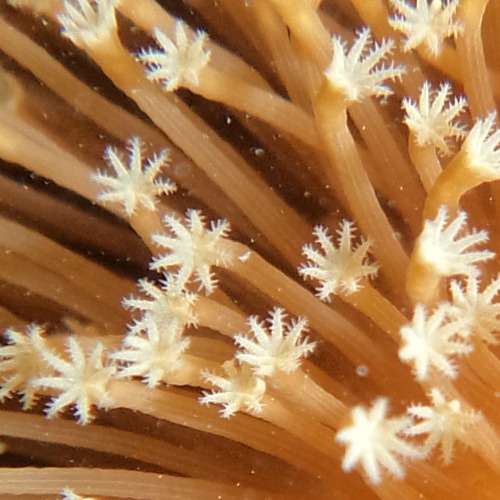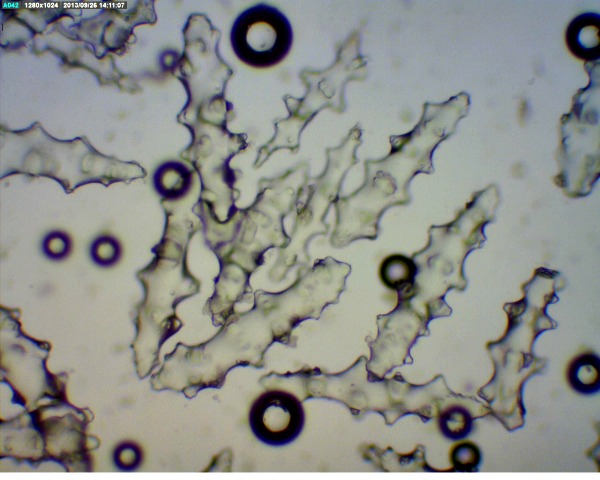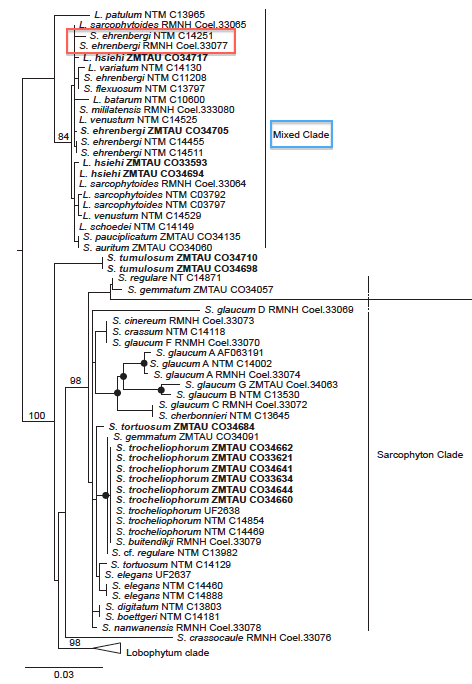 
Phylum: Cnidaria
Cnidarian's main features are the cnidae, which are capsules with tubules that can be turned inside out (Marymegan et al., 2007). Nematocysts are the only cnidae that is found across all cnidarians. Majority of the organisms display radial symmetry but can have bilateral organisation internally (Salvini-Plawen, 1978). This also could suggest that their ancestral form has bilateral symmetry (Matus et al., 2006).
Class: Anthozoa
Anthozoa consist of two monophyletic lineages: the Hexcorallia and the Octocorallia. They consist of polyps which can either be colonial, clonal, or solitary, having an skeletal support either externally or internally. All Anthozoans have an actinopharynx which is a lined in the ectoderm that projects into the coelenteron which is the gastrovascular cavity (Daly et al., 2007). In the actinopharynx, there is a highly ciliated glandular region called the siphonoglyph, which reflects the bilateral symmetry of the polyp (Finnerty et al., 2004).

Pic 1 Microscopic view of a single retracted polyp. Arrows point at the siphonoglyph
which are the cilliated region of the actinopharynx.
Sub Class: Octocorallia
Octocorallia are made up of the soft corals (Alcyonacea) and the gorgonians (Gorgonacea). They contain sclerites in their fleshy tissue. The most distinguishing features are the eight tentacles on the polyp (Mather and Bennett, 1984). The tentacles are fringed with rows of pinnules along the tentacles (Hutchings et al., 2008).

Pic 2 Up close of a colony of polyps displaying 8-fold symmetry
Order: Alcyonacea
Alcyonacea consist of soft corals and gorgonians, and is distinguished by having colonies growing all over with either the presence of the absence of skeletal axis for support. Their distribution and shapes of scleties distinguishes them from each other (Daly et al., 2007).

Pic 3 Sclerites obtained from the studied species
Sub Order: Alcyoniina
Alcyooniina are a group of families that consist of colonies which have their polyps in the fleshy substrate of coenenchyme (Daly et al., 2007).
Family: Alcyoniidae
Alcyoniidaes usually are the dominant inshore communities of the octocorals, and communities are usually large in size (Hutchings et al., 2008). They have a bare basal called the stalk, and a top with baring polyps which are either flat, undulated, lobbed, short branched, or ridged.
Genus: Sarcophyton
Sarcophyton colonies have a rounded lobbed capitulum with a distinct stalk at its basal. Polyp numbers are large and retractile (Hutchings et al., 2001). They are widely distributed and can come in colors such as green, brown, yellow, or cream.
Video 1 Rectracting of Sarcophyton ehrenbergi's polypes when disturbed.
Species: ehrenbergi
They contain sclerites shaped of clubs, irregular ovals and warty shaped (Roa and Devi, 2003). Genetically it has been found that this species is closely related to the genus Lobophytum (Hutchings et al., 2001). As seen in in the phylogenetic tree below, S. ehrenbergi is placed in the mixed clade and is found to be genetically similar to L. hsiehi (Benayahu et al., 2012). Their difficulties in differentiating them are due to too little morphotlogical differences available to study, as well as few historical taxonomic study on the alcyonaceans (McFadden et al., 2006)

Pic 4 Phylogenetic tree of Cnidaria, closely focused only at the Sarcophyton
clade and the mixed clade with Lobophytum. Phylogenetic tree has been
adapted from Benayahu et al. in 2012. |